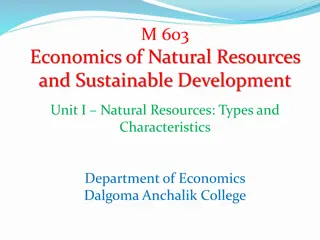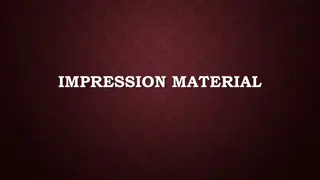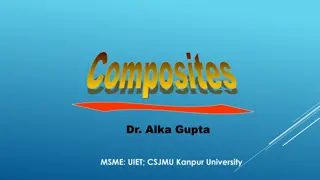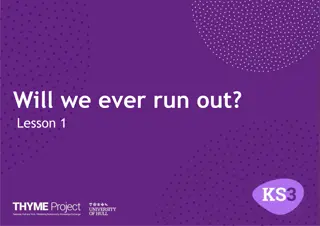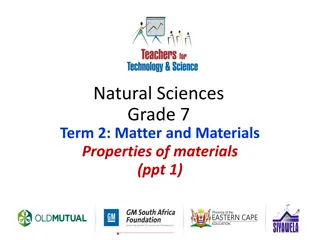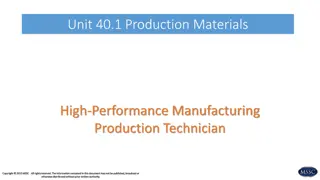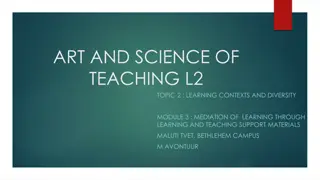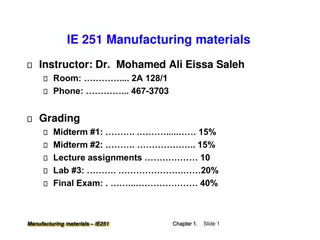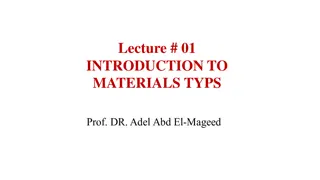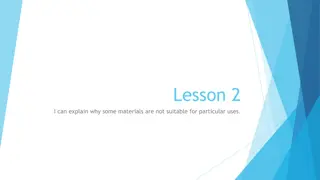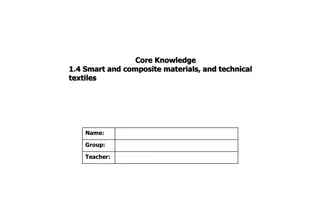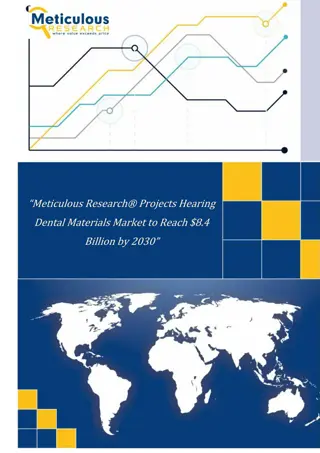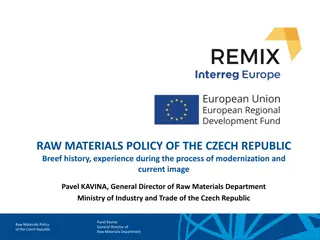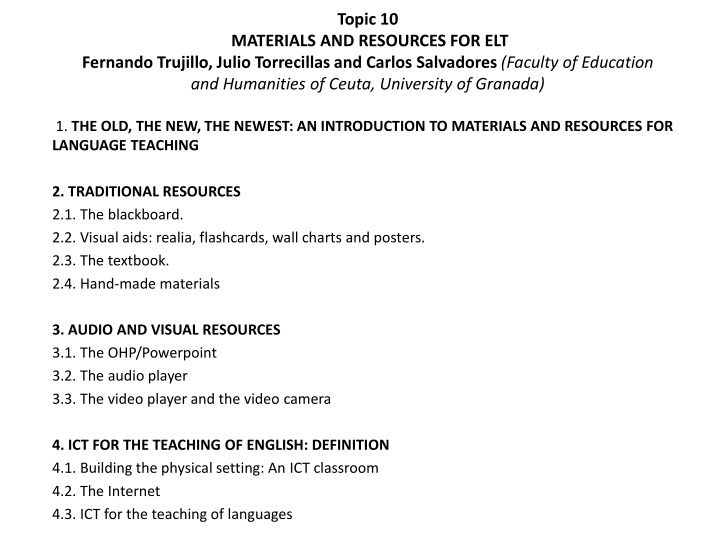
Introduction to Materials and Resources for Language Teaching
Explore the variety of traditional and modern materials and resources available for English language teaching, including the use of visual aids, textbooks, and ICT tools. Learn effective strategies for utilizing the blackboard, creating visual aids such as realia and flashcards, and maximizing the benefits of textbooks in language classrooms. Discover the importance of integrating audio and visual resources, as well as incorporating ICT tools for a comprehensive approach to language instruction.
Download Presentation

Please find below an Image/Link to download the presentation.
The content on the website is provided AS IS for your information and personal use only. It may not be sold, licensed, or shared on other websites without obtaining consent from the author. If you encounter any issues during the download, it is possible that the publisher has removed the file from their server.
You are allowed to download the files provided on this website for personal or commercial use, subject to the condition that they are used lawfully. All files are the property of their respective owners.
The content on the website is provided AS IS for your information and personal use only. It may not be sold, licensed, or shared on other websites without obtaining consent from the author.
E N D
Presentation Transcript
Topic 10 MATERIALS AND RESOURCES FOR ELT Fernando Trujillo, Julio Torrecillas and Carlos Salvadores (Faculty of Education and Humanities of Ceuta, University of Granada) 1. THE OLD, THE NEW, THE NEWEST: AN INTRODUCTION TO MATERIALS AND RESOURCES FOR LANGUAGE TEACHING 2. TRADITIONAL RESOURCES 2.1. The blackboard. 2.2. Visual aids: realia, flashcards, wall charts and posters. 2.3. The textbook. 2.4. Hand-made materials 3. AUDIO AND VISUAL RESOURCES 3.1. The OHP/Powerpoint 3.2. The audio player 3.3. The video player and the video camera 4. ICT FOR THE TEACHING OF ENGLISH: DEFINITION 4.1. Building the physical setting: An ICT classroom 4.2. The Internet 4.3. ICT for the teaching of languages
THE OLD, THE NEW, THE NEWEST: AN INTRODUCTION TO MATERIALS AND RESOURCES FOR LANGUAGE TEACHING Materials and resources have been divided into three sections: The old: - the blackboard, - the textbook, - visual aids and - hand-made materials The new: - the over-head projector/powerpoint, - the audio player and - the video camera and - video player The newest: ICT
2.1. The blackboard The blackboard has been related to the teacher-centred tradition: the teacher, in front of the blackboard, standing opposite the students, who are facing the blackboard as a reference. Rational and creative use of the blackboard: Divide the blackboard into sections. Use fixed sections of the blackboard for some relevant information: date, lesson title, daily agenda, homework, reminders, Be orderly. Be legible; use BLOCK LETTERS, if necessary. Be accurate (particularly about the spelling) and mind your handwriting. Be concise. Highlight the relevant information: use boxes, labels, etc. The board is not only to write on: stick things, project things, draw on it, Read aloud what you are writing on the blackboard as you write it. Share the blackboard with the students
Visual aids: realia, flashcards, wall charts and posters Two general types of visual aids can be used: Realia: real tickets, brochures, sweets, etc.) ready-made materials. Flashcards can be prepared by the teacher and the learners or they can be acquired as printed material. Wall charts comprise a sequence of events which make them suitable for narratives or science-related presentations Posters: easily made as part of a learning task.
2.3. The textbook Penny Ur (1996: 184-5) gives some arguments for and against the use of a textbook. In favour: the sense of structure and progress, its use as a syllabus, its being ready-made, its guidance help for teachers and the fact that it gives the learner some degree of autonomy. Against: its homogeneity and inadequacy for individual needs and objectives, its irrelevance and lack of interest on many occasions, its limitation of initiative and creativity? its level of difficulty may not be appropriate. Most teachers would agree that the textbook is the most important (and frequent) single resource they can use.
The textbook 2 Hints as to how to use the book and a checklist of criteria for the choice of a textbook will be shown below. Cut, copy and paste. Feel free to modify/expand/reduce the textbook. The book belongs to you, you don t belong to the book Adapt it to your needs. Don t use it straightforward, move up and down, forward and backward. There is life outside the textbook: Add materials/information/resources to your textbook There is no best textbook, only a better way to use it Evaluate your textbook and ask your students about it. Check the teacher s book for ideas, suggestions or further activities.
2.4. Hand-made materials Ideas are listed below to help you think about your own materials: Before inventing, search (especially the Internet) Before inventing, ask other colleagues or your nearest teacher resource centre. Once you are creating, remember that appearance is important. Students can also design and create teaching materials Be accurate and be neat Colourful rather than black & white Variety is a guarantee of success
3. Audio and visual resources Here we can include: Powerpoint, Audio Player, Video Player and Camera. General aspects that should be taken into account when dealing with the use of AVR: Advantages: - motivation; interaction; - improvement of messages (combination of sounds and images); - the teacher can face the students all the time; - oral communication enhancement; - reusable materials; - classroom time saving; - promotion of learner-centred systems. Classroom visual aids (enter from YouTube): Disadvantages: - old equipment; - availability in the classrooms; - price; - technical skills required; - extra time needed to prepare activities and materials; - teachers reluctance to use them; - inappropriate usage (inadequate materials or usage in isolation).
3.1. The Overhead Projector (OHP) and Powerpoint The image Slides can be reused as many times as you need them. We save time during the lesson. It is easy to conceal anything on the slede, dictation transcriptions or grammar exercises solutions, for instance. Transparencies/slides are easy to handle as they are enlarged on a screen. Unlike picture boards, flashcards or posters, we have the possibility of building up a picture or combining colours. Integration of resources: Slides can be used together with other teaching aids such as textbooks, tapes (audio) or videos, the blackboard, posters, maps and flashcards.
3.2. Audio player - The sound Together with the blackboard, the audio player is one of the most common pieces of equipment when teaching languages. Advantages: They provide certain contextual aspects and some extra linguistic elements that help in the understanding of messages. They provide exposure to varieties of English and different speakers. They allow for the participation of students through repetition and recording activities. Some disadvantages: One of their weakest points is sound quality. Verbal messages demand a great deal of concentration by students, so beginners may have some difficulties if tapes are played for long periods. Most materials are predetermined, so the teacher has few opportunities to make any adaptation or adjustment to his students needs.
Video 1 The combination of both sound and image shown in a context is a powerful tool in the EFL Classroom. Some advantages of videos are: They are highly motivating for students. They demand interaction and can be used as learned-centred activities. They allow teachers to use image or sound separately as well. They can be played or paused as many times as needed. Students can create their own materials using a video camera. As language is presented in its context, students tend to associate it with the context in which it is used, which helps them to learn meaningfully.
Videos 2 Some disadvantages of videos: Video materials are predetermined, so there are few chances for making adaptations. A good idea could be using video cameras in order to make our own videos. It may be difficult for students to understand that video recordings are not just for fun. Teaching with video is not just watching TV. It is essential they are introduced gradually, to make them understand how valuable this teaching aid can be.
4. ICT for the Teaching of English Information and Communication Technologies are becoming increasingly integrated into our daily lives. Personal computers, scanners, and digital cameras fit into the hardware category; database storage programs and multimedia programs all fit into the software category. Common devices (telephone lines, mobile phones, satellites, ) ICT can be regarded as the use of computers to control several pieces of hardware (scanner, printers, hi-fi equipment, TV, etc.), including an Internet connection. The convergence of CALL, defined as the search for and study of applications of the computer in language teaching and learning and ICT creates a new dimension for classrooms, teachers and students. Basic English lesson
4.2. INTERNET Definition and uses The Internet is also changing the way we work, the way we spend our free time and the way we learn and teach. The Internet is comprised of computers and computer networks connected to a global network where everyone can communicate with everyone else. In fact, the information stored in any computer can be delivered through the Internet, so no person, group or government can control the World Wide Web.
4.3.2. On-line Connection 4.3.2.1. E-mail. Electronic mail, computer-mediated communication is a fast, reliable and economical form of sending and receiving information. e-mail from two different perspectives: the teacher and the students: Teachers Students Personal use with teachers we know. Sharing experiences with all the teachers subscribed to a discussion list. Pen-Pal services to get in touch with other schools, institutions, (www.teaching.com/iecc/ ). Exchange information, receive/send files, ask questions, etc., either with teachers or school mates. Use pen-pal services to get in touch with other students all around the world as IECC
4.3.2. On-line Connection 2 Chatting or the Social Internet setting If we look at the use of Internet services, chatting is perhaps one of the places young people spend most of their time at. It is possible to transmit both voice and video (using appropriate software); thus, the Internet has become an enormous meeting place and communication platform. Newsgroups Electronic Discussion Groups consist of collections of a great variety of topics (from many teaching groups to stamp collecting). You can get in touch with people who share your interests or even you can argue with those who don t.
4.3.2. On-line Connection Web Logs or Blogs A Blog is essentially a personal web site where a sort of online diary or personal journal is displayed. Mobile phones Nowadays a new form of communication is developing all over the world at a great speed. The power of mobile and satellite technology is increasing day by day. The number of people who own a mobile phone is greater than ever, even children are making use of short messages to connect with their friends or even with groups of people.


